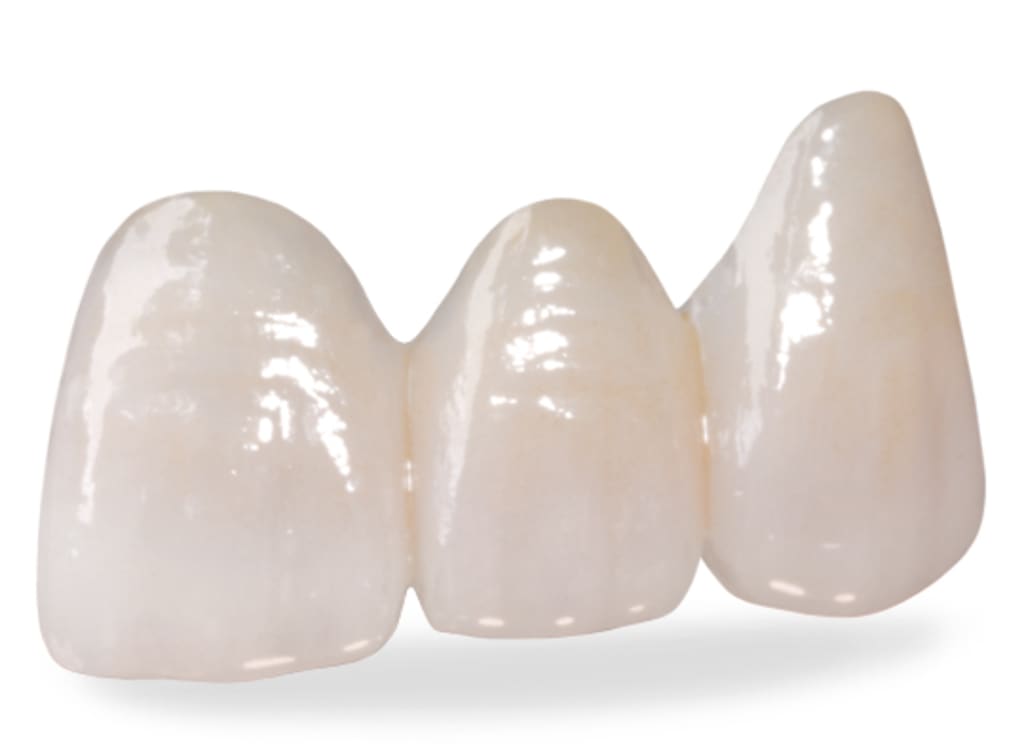
Abstract
The esthetic demands made on dental restorations have resulted in increased use of dental ceramics. Various new ceramic materials and new techniques have been developed during the past decade. These recent developments have attempted to overcome the principal disadvantages of inherent brittleness and the potential to abrade the opposing dentition by using increasingly complex technology or simplifying existing techniques and/ or materials.
Introduction
The word ceramic is derived from the Greek word “Queremos” which translates to mean, “burnt earth.” It originated from the traditional art of fabricating pottery where mostly clay was fired to create a hard, brittle object. The dental metal Ceramics is defined as “An inorganic compound with non-metallic properties typically consisting of oxygen and one or more metallic or semi-metallic elements that are formulated to produce the part of a metal ceramic-base.” Since the introduction of the first successful porcelain fused to a metal system in the early 1960‟s
1 Porcelain is intermittently brittle & has relatively low tensile strength, it is therefore generally fused to a metal substrate to increase its resistance to fracture.
2 The porcelain & creates metal ion discolorations that may affect the aesthetics of the porcelain. In addition, some patients have allergic reactions or sensitivities to various metals. The development of all-ceramic systems for dental restorations has been noteworthy in the last three decades. New processing techniques such as heat-pressing, slipcasting, and Computer-Aided Design-Computer Aided Machining (CAD-CAM) for dentistry have been developed.
Classification
Metal-free ceramics can be classified as Based on composition and fabrication:
1. Conventional (powder-slurry) ceramics;
2. Castable ceramics;
3. Machinable ceramics;
4. Pressable ceramics;
5. Infiltrated ceramics.
The specific attributes within their metal-ceramic formulation:
1. Glass-matrix ceramics
2. Polycrystalline ceramics
3. Resin-matrix ceramics
Based on composition and fabrication:
1. Conventional (powder-slurry) ceramics:
These products are available in powder form to which water is added by the technician to produce a slurry.
a. Duceram LFC8
It’s a low fusing hydrothermal ceramic consisting of an amorphous glass containing hydroxyl (-OH) ions. It has greater density, high flexural strength, greater fracture resistance, and lower abrasion than feldspathic porcelain.
The restoration is made in two layers. Duceram Metal Ceramic crown containing Leucite, followed by the veneer -Duceram Low Fusing Ceramic
b. Optec HSP9
It is a leucite reinforced feldspathic porcelain that is condensed and sintered like aluminous and traditional feldspathic porcelain over a refractory die rather than platinum foil.
2. Castable Ceramics
which are used for the fabrication of cores or full-contour restorations using lost wax and centrifugal casting technique. The material is generally available in the single shade which is either covered by conventional feldspathic porcelain or stained for achieving prop
3.Machinable ceramics:
These items are provided as fired ingots in different shades and are utilized in PC helped plan PC supported assembling, or on the other hand Emax CAD, strategies. The machined reclamation can be stained and coated to get the ideal portrayal.
a. Advanced Systems (CAD/CAM):
To mechanize the creation of what might be compared to a cast reclamations, Computer-helped plan, and PC supported fabricating (CAD/CAM) advances have been consolidated into an entire framework. By utilizing advanced data about the tooth arrangement or an example of the reclamation a PC helped plan (CAD) is made on the video screen for assessment and change. The picture goes about as a source of perspective for planning a reclamation on the video screen. After acknowledgment of 3-D picture for the reclamation plan, the PC makes an interpretation of the picture into a bunch of guidelines to direct a processing device (PC helped to fabricate [CAM]) in cutting the rebuilding from an artistic square.
Summary
For as long as 200 years, ceramics have been the space of the field of dentistry. Their advantageous highlights incorporate their biocompatibility and their appearance. They can be altered to reproduce the shading, clarity, and fluorescence of normal teeth. However, their low crack sturdiness is one of the significant downsides. Besides, they display huge terminating shrinkage. Different sans metal artistic frameworks have been talked about. More grounded materials ought to be utilized in pressure bearing conditions and milder materials ought to be utilized where the tooth scraped spot is basic. The stylish aftereffects of these crowns can be brought to the fullest in the possession of a prepared and gifted Dental Lab. The value of these frameworks over a long range is yet to be demonstrated. Progression without metal fired frameworks like the IPS EMPRESS 2 has come about in a practically tough sans metal artistic rebuilding. At long last, headways in CAD-CAM has come about in the rebuilding with feel, strength, and simplicity of manufacture done in a solitary visit. The lone weakness with the CAD/CAM framework is the impediment with the restricting tooth, which requires manual refinement at present. However, with the approach of more current programming and progression in frameworks, this minor hiccup is required to be tackled in the blink of an eye bringing about a rebuilding that is practically strong, stylishly amazing with exact edges and low wear on the restricting teeth, all the more altogether, less strategy touchy easily of manufacture and less tedious





Comments
There are no comments for this story
Be the first to respond and start the conversation.